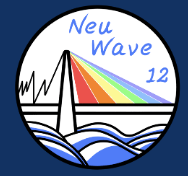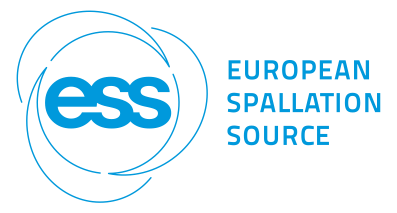Conveners
Afternoon Session 1
- Takenao Shinohara (Japan Atomic Energy Agency)
Afternoon Session 1
- Meimei Wu (China Institute of Atomic Energy)
Afternoon Session 1
- Søren Schmidt (European Spallation Source ERIC)
Energy-resolved neutron imaging provides unique opportunity to investigate bulk microstructure and elemental composition, all in one non-destructive measurement, providing neutron transmis-sion spectra can be measured in a wide energy range [1]. The existence of bright pulsed neutron beams and fast neutron counting detectors enable reconstruction of sample characteristics within several...
Neutron Bragg-edge imaging, offering high spatial resolution for visualizing crystallographic information, has become a useful tool for material research. Magnesium (Mg) and its alloy, as one of the light structural materials, have been widely applied in various industries. Deformation twinning plays an important role in the deformation processes of Mg alloys with a hexagonal-close-packed...
Recent advances have been made at SINQ, the neutron source of the Paul Scherrer Institute in Villigen, Switzerland, in applying the Frame Overlap Bragg edge Imaging (FOBI) method for non-destructive internal strain measurements [1]. This method employs a multiple slit chopper with a pseudorandom pattern, allowing neutron pulses with different wavelengths to arrive at the detector...
The capabilities of Bragg edge imaging to characterize microstructure features of relatively large polycrystalline objects with good spatial resolution have been extensively proved over the years. However, the quantitative analyses of the signature of crystallographic texture in the spectrum remain a challenge. A prediction of transmission spectra with respect to known ODFs has been proven to...
See attached pdf for proper abstract with figures, but here is a copy paste text.
Operando visualization of current flow in energy devices using polarized time-of-flight neutron imaging.
Authors: Cédric Qvistgaard1, Søren Schmidt2, Alexander Wolfertz3, Vahid Karimi4,Shuang Ma Andersen4, Takenao Shinohara5, Tetsuya Kai5, Joeseph Don Parker6, Hirotoshi Hayashida6, Luise Theil Kuhn1.
1...
Polarised neutron imaging is a well-established powerful technique for investigating magnetic properties of samples [1-3]. By making use of the intrinsic magnetic moment of the neutrons, a magnetic field in and around a sample can be visualised as alterations on the transmitted neutron beam. This method is based on the spatially resolved measurement of cumulative precession angles of a...
Energy-resolved neutron imaging using intense, pulsed neutrons at instruments such as RADEN [1] at the J-PARC Materials and Life Science Experimental Facility put severe requirements on the performance of the imaging detector used. In particular, the imaging detector should provide spatial resolution less than 1 mm, time resolution of 1 µs or less, high neutron flux capability, and strong...
Recently developed event-driven detectors capable of resolving spots of light induced by particle interactions in scintillators opened up new perspectives for detector systems with a concept that fuses the benefits of integrating camera type with counting type detectors [1]. A major drawback for many existing detectors is the tradeoff between temporal and spatial resolution. As such,...
Event-cameras are revolutionizing neutron resonance imaging (NRI), a technique extending the high-precision neutron resonance transmission analysis (NRTA) method to irregular and inhomogeneous samples through imaging. These cameras enable high rates up to 80 MS/s and, through event-by-event data acquisition, facilitate neutron/gamma discrimination and sub-pixel resolution via center-of-gravity...

